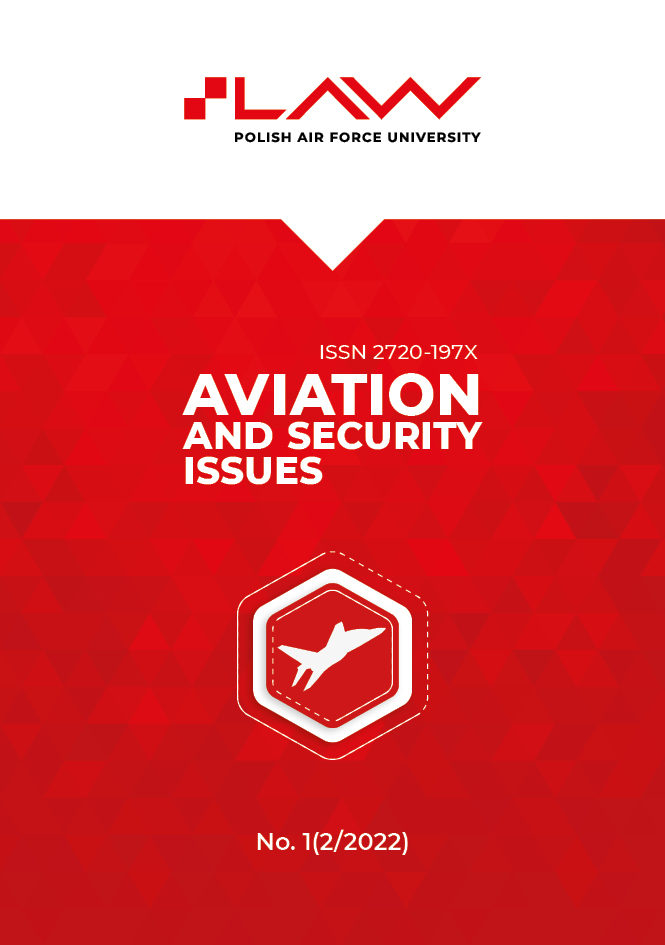ROLA EGZAMINÓW STANAG WE WZMACNIANIU PARTNERSKIEGO WSPÓŁDZIAŁANIA POLSKICH SIŁ ZBROJNYCH Z SIŁAMI NATO
##plugins.themes.bootstrap3.article.main##
Abstrakt
Ostatnie lata przyniosły ogromny postęp naukowy i technologiczny widoczny na współczesnym polu walki, pozwalający na wprowadzenie nowych systemów uzbrojenia i strategii prowadzenia działań zbrojnych. Oprócz wyzwań, jakie niosą ze sobą nowe środki i metody prowadzenia wojny, żołnierze stają przed coraz większą potrzebą wykorzystywania swoich umiejętności językowych, uczestnicząc w międzynarodowych operacjach wojskowych. Ujednolicenie kompetencji językowych jest warunkiem nie zbędnym dla prawidłowego funkcjonowania w międzynarodowym środowisku wojskowym, przyczyniając się do wzmacniania partnerskiego współdziałania z siłami NATO. Poniższy artykuł miał na celu omówienie roli egzaminów STANAG w rozwijaniu kompetencji językowych żołnierzy RP, co znajduje odzwierciedlenie w ramowym programie szkolenia językowego dla Polskich Sił Zbrojnych, ze szczególnym uwzględnieniem doskonalenia sprawności mówienia. Artykuł podkreślił wkład systemu testowania językowego według STANAG 6001 w rozwój interoperacyjności z wojskami sojuszniczymi, przedstawiającgłówne fazy tego procesu. W końcowej części autorka podjęła próbę ustalenia, w jakim stopniu ten proces jest faktycznie osiągalny.
##plugins.generic.usageStats.downloads##
##plugins.themes.bootstrap3.article.details##

Utwór dostępny jest na licencji Creative Commons Uznanie autorstwa – Użycie niekomercyjne – Bez utworów zależnych 4.0 Międzynarodowe.
Bibliografia
Articles and monographs
Hughes A., Testing for Language Teachers, Cambridge University Press 2013.
Machulska B., Short Texts for STANAG Examination Practice, WSOSP, Dęblin 2014.
NATO BILC Handbook: English Language Teaching Faculty Development, 2020.
NATO BILC Handbook: Language Testing Seminar, 2000.
NATO BILC: A Glossary of Testing Terms, 2022.
Thornbury S., How to Teach Speaking, Pearson Education Limited 2005.
United States Army: Multinational Interoperability Reference Guide, 2016.
Weir C., Understanding and Developing Language Tests, Prentice Hall 1993.
Legal acts and regulations
Decyzja Nr 175/MON Ministra Obrony Narodowej z dnia 14 grudnia 2021 r. zmieniająca decyzję w sprawie kształcenia i egzaminowania ze znajomości języków obcych w resorcie obrony narodowej, Warszawa 2021.
Decyzja Nr 73/MON Ministra Obrony Narodowej z dnia 26 maja 2020 r. w sprawie kształcenia i egzaminowania ze znajomości języków obcych w resorcie obrony narodowej, Warszawa 2020.
NATO STANDARD ATrainP-5 Language Proficiency Levels, Edition A, Version 2, NATO Standardization Office 2016.
NATO Standardization Agreement STANAG 6001, Edition 5, NATO Standardization Office 2014.
Ramowy program nauczania języka angielskiego w siłach zbrojnych RP, Edycja III (Poziomy 1-3 wg STANAG 6001), Warszawa 2009.
Internet resources
Crossey M., Improving linguistic interoperability, https://www.nato.int/cps/en/natohq/opinions_22033.html.
Interoperability: Connecting Forces, https://www.nato.int/cps/en/natohq/topics_84112.html.
Model Egzaminu z Języka Angielskiego Poziom 2, Centralna Komisja Egzaminacyjna Języków Obcych Ministerstwa Obrony Narodowej, https://wsnjo.wp.mil.pl/pl/pages/modele-egzaminacyjne-2020-05-12-z/.
Model Egzaminu z Języka Angielskiego Poziom 3, Centralna Komisja Egzaminacyjna Języków Obcych Ministerstwa Obrony Narodowej, https://wsnjo.wp.mil.pl/pl/pages/modele-egzaminacyjne-2020-05-12-z/.
Monaghan R., Language and Interoperability in NATO: The Bureau for International Language Co-ordination (BILC), http://www.journal.forces.gc.ca/vol13/no1/doc/Monaghan%20EN%20page2332.pdf.
NATO Standardization, https://www.nato.int/structur/ac/135/50years_nato/chapters/2_standardization.htm.
STANAG 6001 for Non-Specialists, https://www.natobilc.org/files/STANAG%20for%20Non-Specialists_Modified_June2013%20doc%20(3).pdf.
STANAG 6001 Overview of Language Proficiency Levels, https://www.natobilc.org/files/STANAG%20for%20Non-Specialists_Modified_June2013%20doc%20(3).pdf.
Terms of Reference (TORs) of the Bureau of International Language Coordination, https://www.natobilc.org/documents/BILC%20Terms%20of%20Reference%20Edition%201v2%20(2016).pdf.

